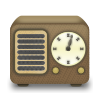Community Media/Radio/Governance UNESCO Workshop/CR Case Studies
From WikiEducator
| Work in progress, expect frequent changes. Help and feedback is welcome. See discussion page. |
Contents
Short case studies
Radio Sagarmatha: Nepal, capital, 1+ million
- License held by NGO: NEFEJ (itself member-based and democratic)
- No members
- Board of directors based on executive of NEFEJ and appointments
- Managed by paid staff; hierarchical
- Programmed largely by paid employees: 40-80
- Focus:
- Public interest and national culture
- Experts not access
- Innovative
- Proactive in terms of women’s participation
- Dominated by “high caste”; no political affiliation
- Funded by ads, donors
- 500 Watts
- Passive (public)
Vancouver Cooperative Radio: Canada, big city, 2+ million
- License held by the station
- Cooperative of members: 25000+ members; 2500 active
- Board of directors elected by members
- Managed by small team of staff; with decision-making by committees (programming, training, membership and outreach, finance, technical, web)
- Programmed by 300+ volunteers, especially ‘social movements’ and ‘representatives’
- Content focus on ‘marginalized’, alternatives:
- Social movements, ‘causes’, minorities, languages, music
- Non-commercial information, culture
- Best: alternative news/issues; culture/music
- Empowerment
- Highly proactive in terms of participation: quotas, affirmative action
- Dominated by women, community, minorities
- Funded by members, limited ads
- 5500 Watts; cable FM
- Democratic
Radio Lumbini: Nepal, town, villages; 1+ million
- License held by a non-profit coop
- Cooperative of owners: 200 members
- Board of directors chosen by members
- Managed by small group: manager, active board members, senior staff
- Programmed by 50+ paid staff: FT, PT, programme based, ‘volunteer’ (interns)
- Focus on ‘community’:
- Common values, language, news, villages
- Positive social messages
- Best: village profiles, local news
- Reasonably active in terms of participation: women, disabled
- Dominated by “high caste”; political affiliation
- Funded by ads, donor support
- 500 Watts
- Active
CKUT Radio McGill: Canada, big city, 2+ million
- License held by a non-profit corporation – NGO
- All university students are members
- Board of directors determined/elected: university staff, elected students, radio staff, community rep (chosen)
- Managed by collective: manager, key staff
- Programmed by 200+ volunteers: community members, students
- Focus on ‘alternatives’ and ‘communities’:
- Social movements, alternative politics and culture (esp. music)
- Minority groups, especially languages
- Best: music, community services
- Pro-active in terms of participation: women, minority groups
- Dominated by youth
- Funded by membership, donations, limited ads
- 5000 Watts
- Active
Waiheke Radio: Waiheke Island, Auckland, New Zealand
Population: 8,000+. Island. http://www.waihekeradio.org.nz
- Low Power FM broadcast - no license required
- Members, currently 24. DJs are required to be paid up members.
- Governed by a Trust, 3 members. Regular meetings are held and governance is unfolding.
- Managed by volunteers
- Focus on local community, specialist music shows
- Funded by grants, fundraising, membership fees, sponsorship
- 4 watts
